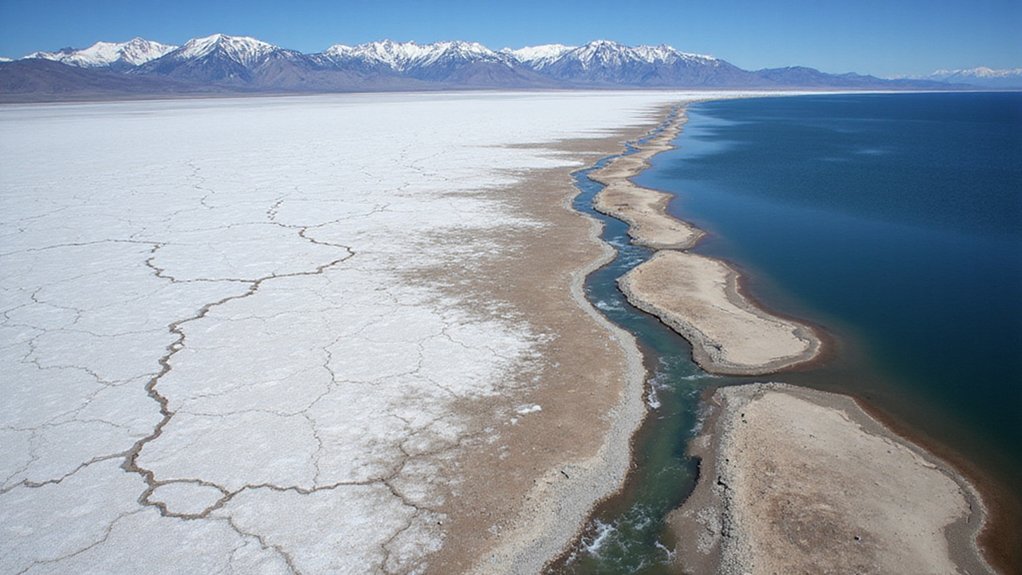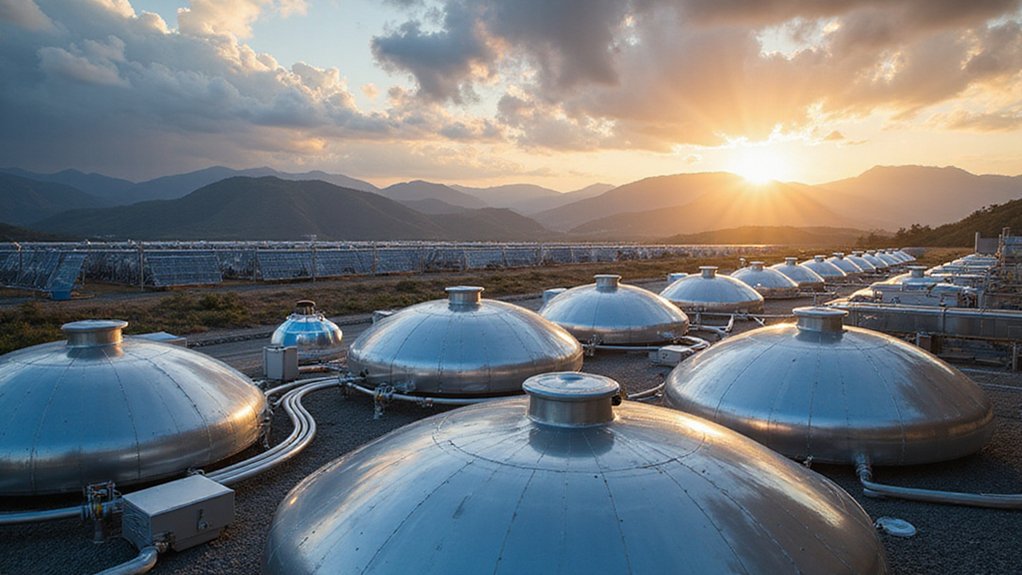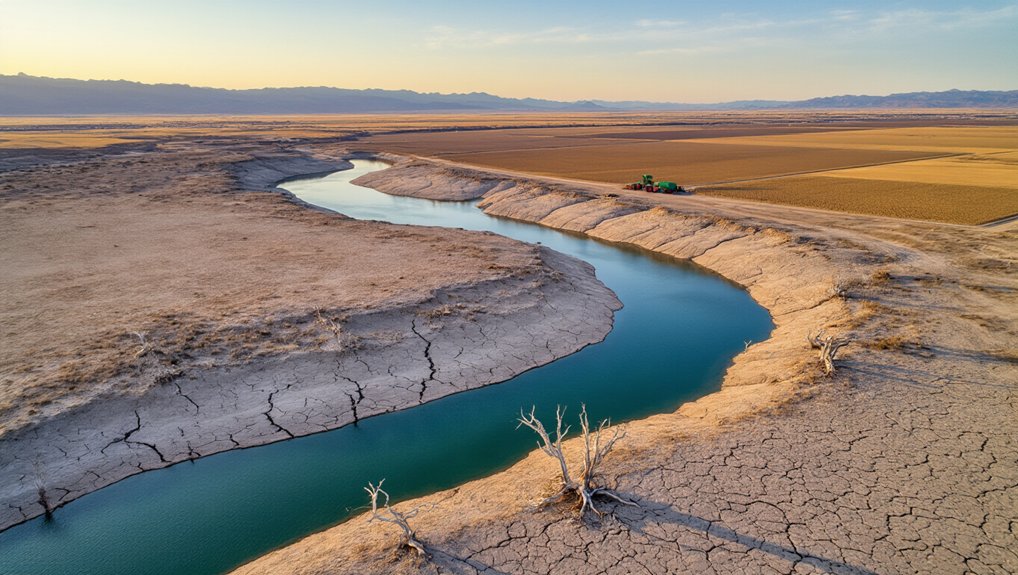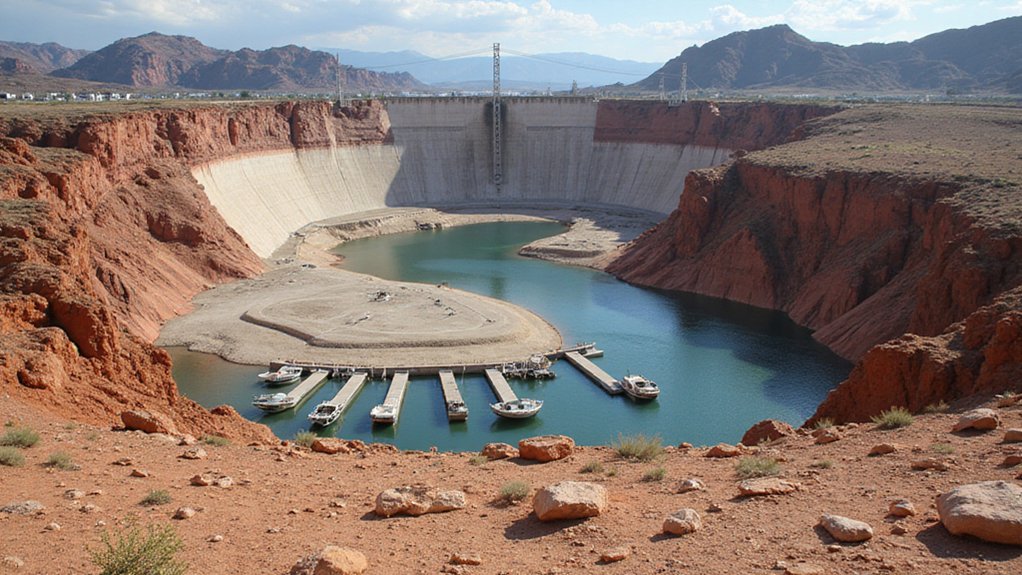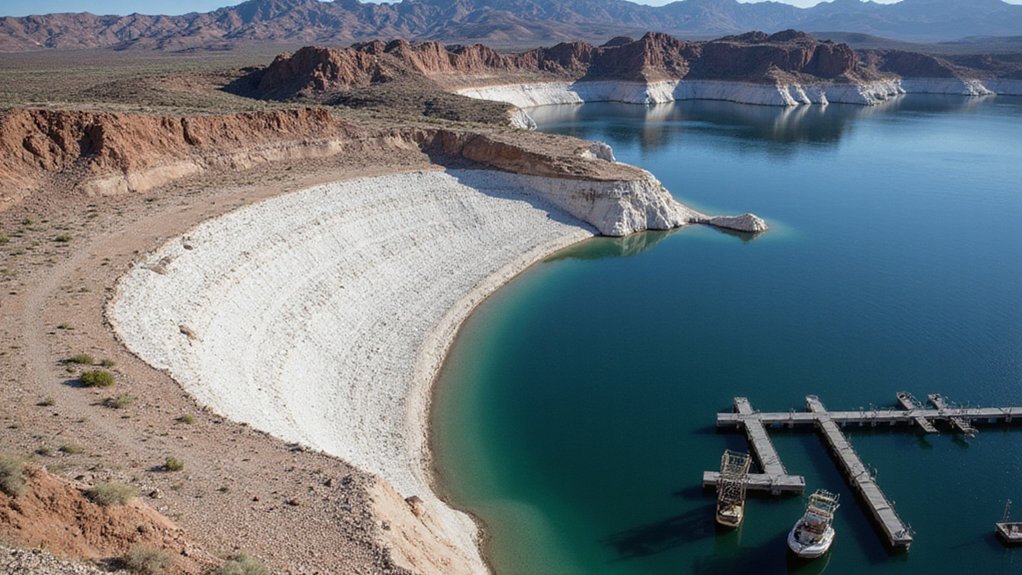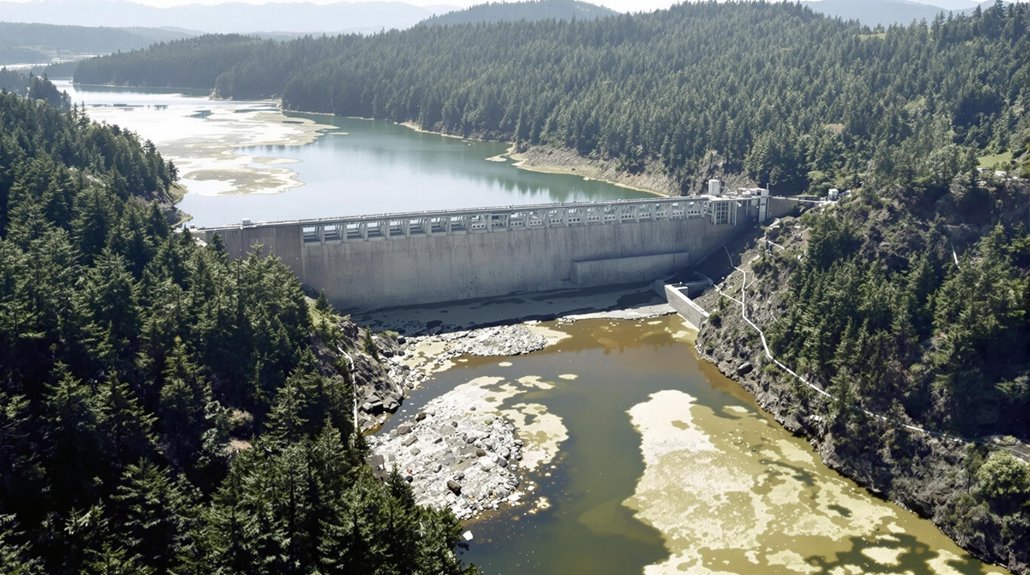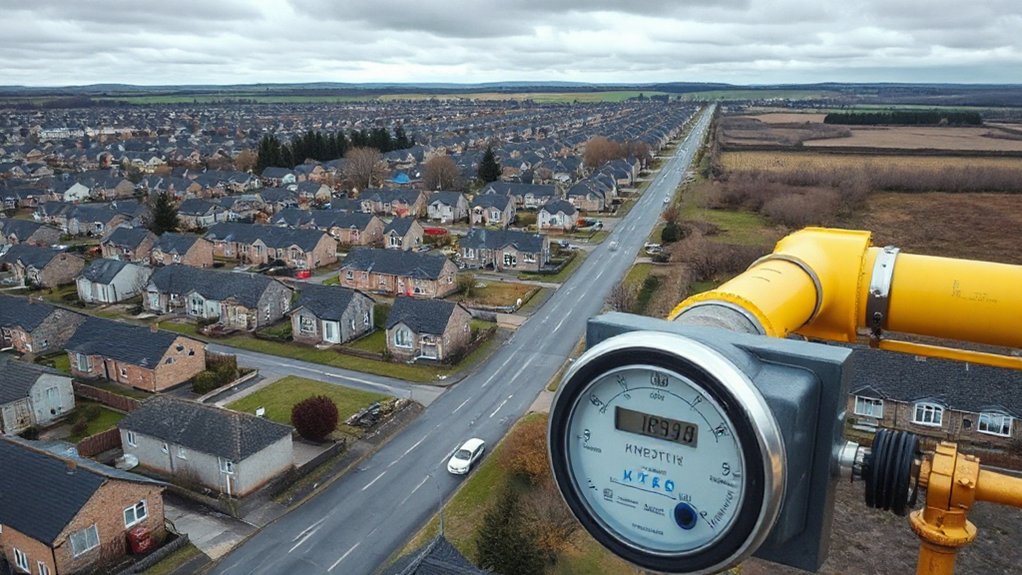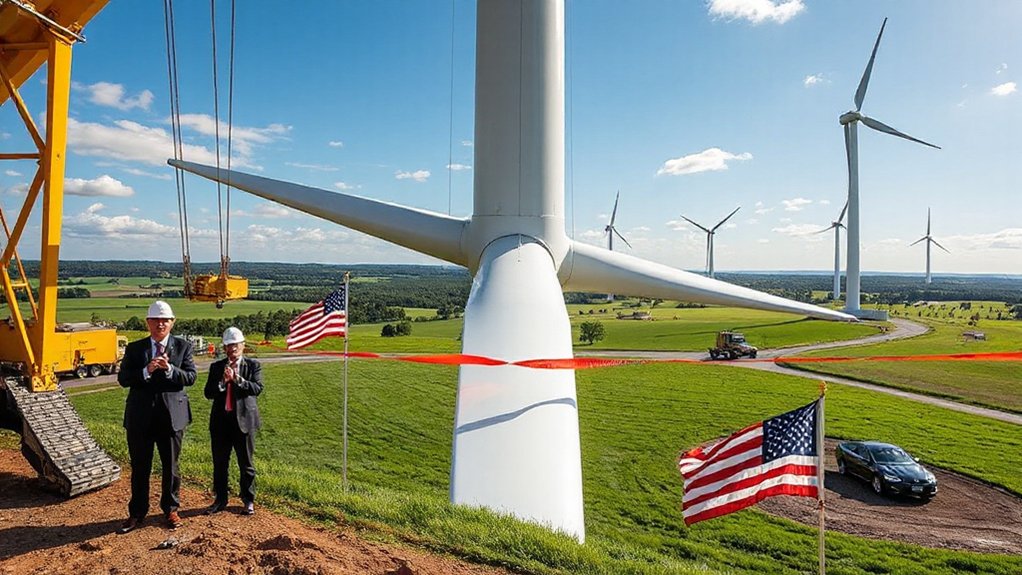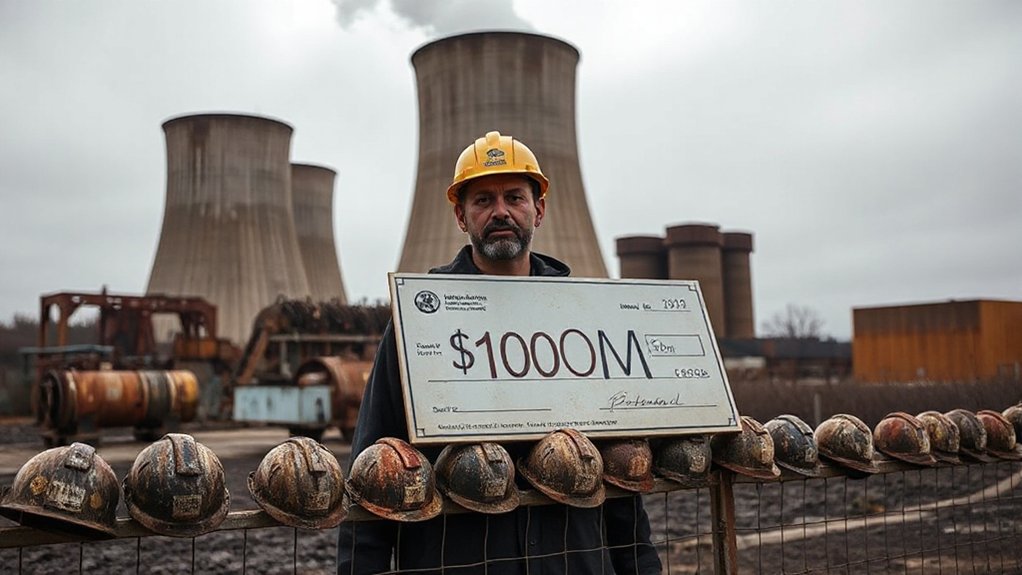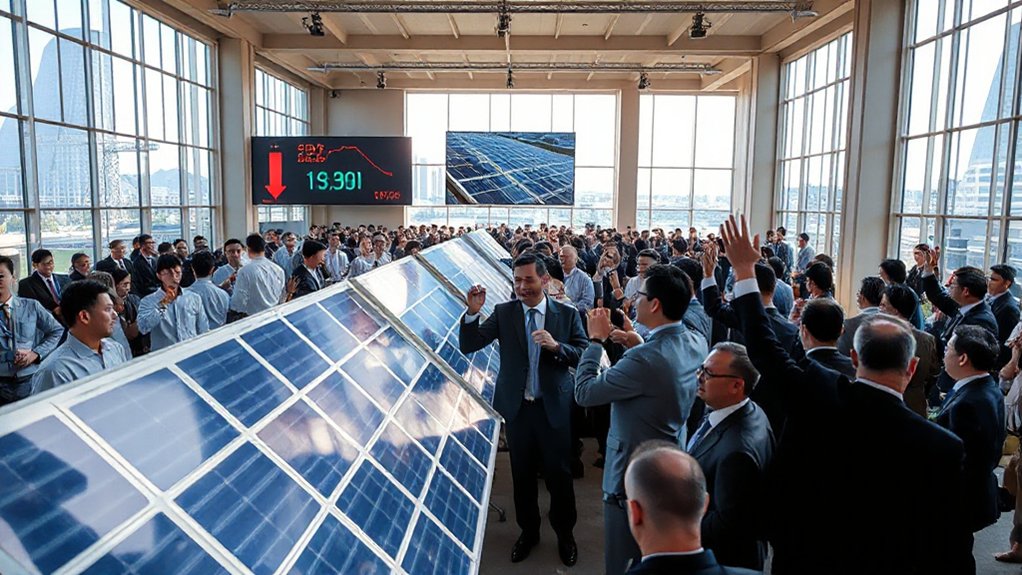Despite modest gains in 2024, Utah’s Great Salt Lake remains trapped in a downward spiral, with current water levels hovering at a concerning 4,191.8 feet above sea level—well below its historic average. The lake’s dire situation isn’t exactly breaking news. Record lows hit in 2022, and the recent upticks—a measly 0.4-foot rise in the south arm and 2.8 feet in the north—barely qualify as progress. We’re still talking about water levels nearly 6 feet below what scientists consider minimally healthy.
While the lake shows modest gains, it’s still gasping for water at 4,191.8 feet—nowhere near health by scientific standards.
You can thank the usual suspects for this mess. Persistent drought? Check. Excessive water diversion for farms and cities? Double check. Throw in warmer summers cranking up evaporation rates, and you’ve got a recipe for ecological disaster. The lake’s recovery hopes ride on precipitation patterns that are about as reliable as a weather forecaster’s five-day prediction.
The ecological fallout isn’t pretty. Higher salinity is threatening brine shrimp populations—tiny creatures with an outsized role in the ecosystem. Millions of migratory birds are finding their favorite pit stop increasingly inhospitable. Exposed lakebed isn’t just an eyesore; it’s becoming a public health hazard as dust storms kick up potentially toxic particles.
Local economies are feeling the pain too. The brine shrimp harvesting industry is taking hits. Mineral extraction companies can’t exactly extract what they can’t reach. Tourism? Good luck attracting visitors to shrinking, increasingly salty waters. This stark transformation is clearly visible in VIIRS satellite imagery that has tracked the lake’s decline since 2012.
The lake’s rhythm has always included seasonal fluctuations—typically rising in spring and dropping in fall by about two feet. But the overall trajectory points firmly downward. Satellite imagery tells the grim story: from nearly 4,200 feet in 2012 to today’s dismal readings. Recent reports show waters rising at the start of 2025, with the southern arm reaching 4,192.5 feet elevation.
For nearby residents, the situation translates to declining property values and increasing respiratory issues. Nothing says “dream home” like toxic dust storms and receding shorelines. Without significant intervention and water use reforms, the Great Salt Lake might soon need a new, less impressive name. Maybe “Pretty Good Salt Puddle”?
References
- https://www.upr.org/environment/2025-01-03/great-salt-lake-makes-new-gains-to-start-new-year-what-does-it-need-in-2025
- https://satelliteliaisonblog.wordpress.com/2025/01/29/the-changing-water-levels-of-the-great-salt-lake-over-twelve-years/
- https://d36oiwf74r1rap.cloudfront.net/wp-content/uploads/2025/01/GSL-Jan2025.pdf
- https://attheu.utah.edu/facultystaff/utah-is-making-progress-on-great-salt-lake/
- https://water.utah.gov/utah-water-conditions-update-july-2025/
